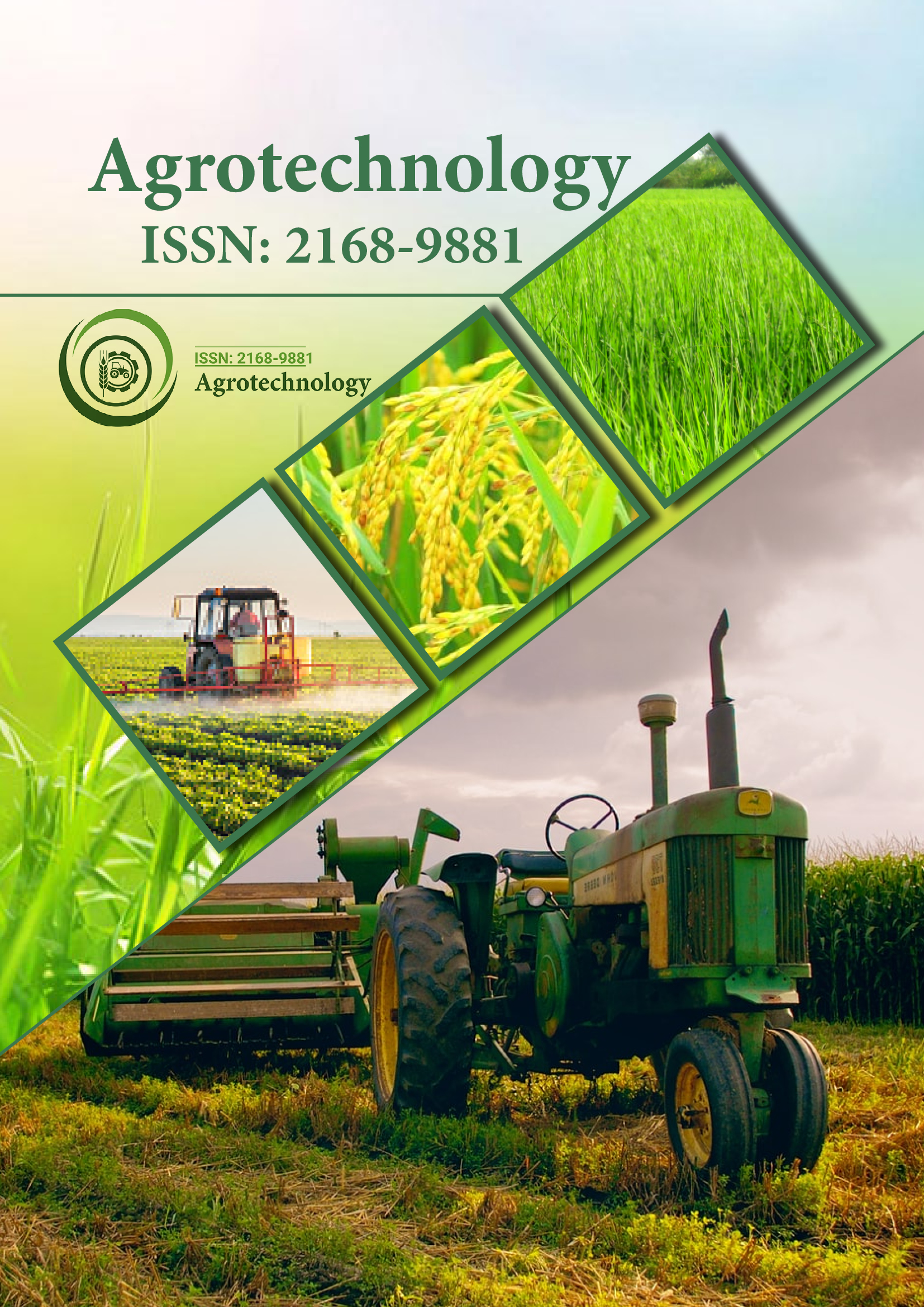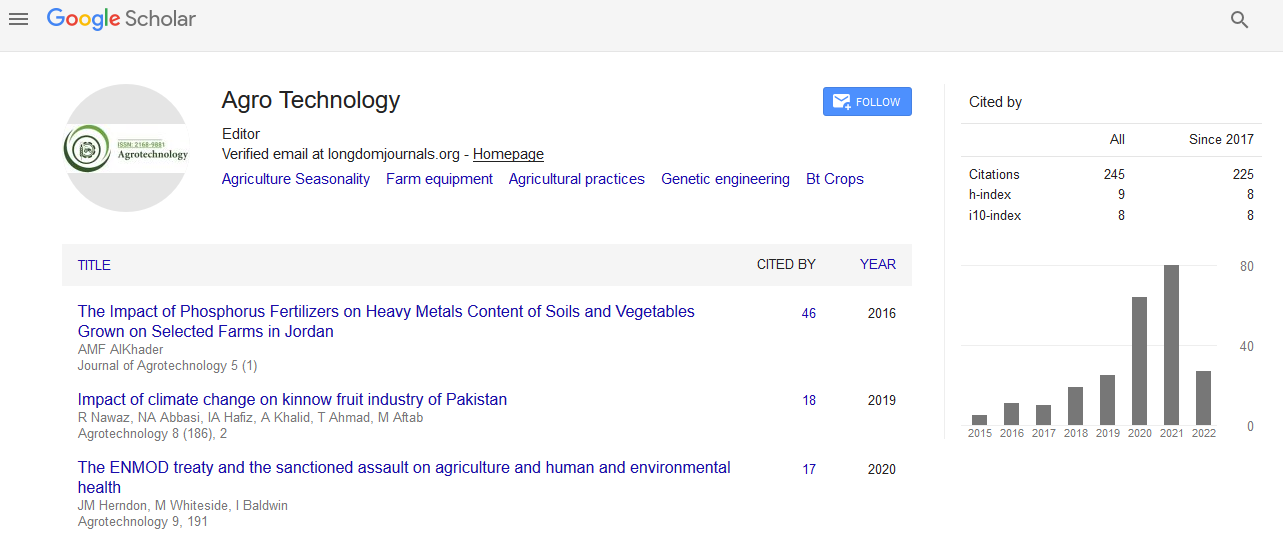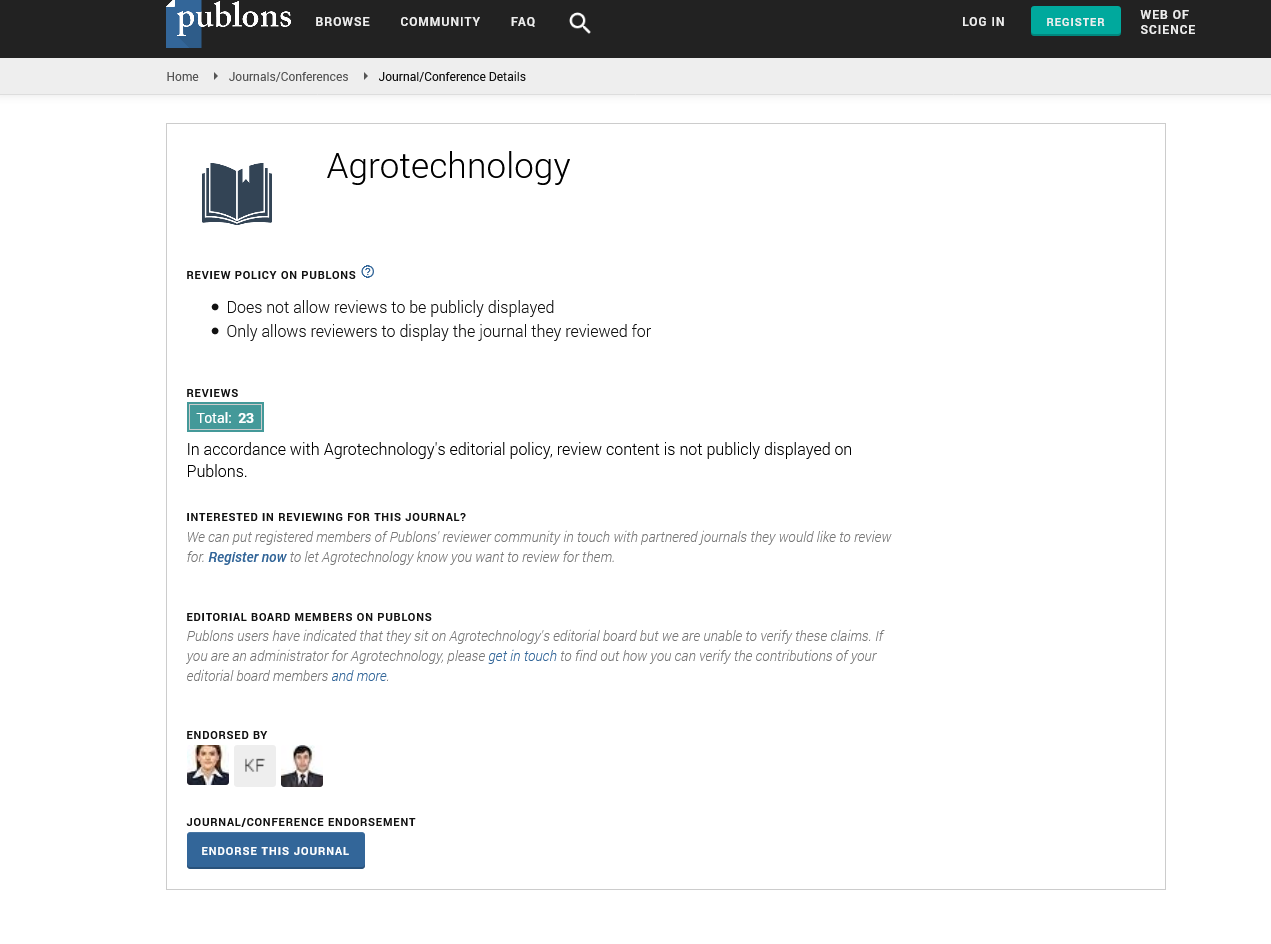Indexed In
- Open J Gate
- Genamics JournalSeek
- Academic Keys
- ResearchBible
- Cosmos IF
- Access to Global Online Research in Agriculture (AGORA)
- Electronic Journals Library
- RefSeek
- Directory of Research Journal Indexing (DRJI)
- Hamdard University
- EBSCO A-Z
- OCLC- WorldCat
- Scholarsteer
- SWB online catalog
- Virtual Library of Biology (vifabio)
- Publons
- Geneva Foundation for Medical Education and Research
- Euro Pub
- Google Scholar
Useful Links
Share This Page
Journal Flyer

Open Access Journals
- Agri and Aquaculture
- Biochemistry
- Bioinformatics & Systems Biology
- Business & Management
- Chemistry
- Clinical Sciences
- Engineering
- Food & Nutrition
- General Science
- Genetics & Molecular Biology
- Immunology & Microbiology
- Medical Sciences
- Neuroscience & Psychology
- Nursing & Health Care
- Pharmaceutical Sciences
Opinion Article - (2025) Volume 14, Issue 1
Transforming Greenhouse Agriculture with AI for Sustainable Resource Management
Victor Moreau*Received: 19-Feb-2025, Manuscript No. AGT-25-28741; Editor assigned: 21-Feb-2025, Pre QC No. AGT-25-28741 (PQ); Reviewed: 07-Mar-2025, QC No. AGT-25-28741; Revised: 14-Mar-2025, Manuscript No. AGT-25-28741 (R); Published: 21-Mar-2025, DOI: 10.35248/2168-9891.25.14.396
Description
The integration of Artificial Intelligence (AI) into greenhouse agriculture represents a significant shift in how we approach food production, sustainability and resource management. As the world faces mounting challenges related to climate change, food security and environmental degradation, greenhouse agriculture, with its controlled environments, has emerged as a potential solution. However, traditional greenhouse operations, despite their potential, often suffer from inefficiencies in energy use, resource consumption and waste management. AI-driven innovations provide the opportunity to overcome these barriers and unlock the true potential of sustainable agriculture, but they also raise important questions about long-term impacts, scalability and the balance between technological advancement and ecological integrity.
AI has the potential to revolutionize greenhouse agriculture in several ways. The most immediate application is in optimizing resource use—specifically, energy, water and nutrients. Greenhouses are energy-intensive systems, depending heavily on heating, cooling and artificial lighting to create ideal growing conditions. AI models, particularly machine learning algorithms, can analyze vast amounts of environmental and operational data to predict and optimize energy consumption. For instance, AI-driven systems can dynamically adjust temperature and humidity levels, minimizing the need for constant heating or cooling. By learning from past data, AI can forecast energy needs based on real-time weather patterns and internal greenhouse conditions, significantly reducing waste and improving energy efficiency.
Another major area where AI is having a transformative impact is in water and nutrient management. Precision agriculture has long emphasized the need to deliver resources like water and fertilizers in a more targeted manner. AI enhances this by enabling real-time monitoring and adjusting of irrigation and fertigation systems, ensuring plants receive the optimal amount of resources at the right time. This minimizes water waste, reduces nutrient runoff and maximizes crop yield. AI-powered sensors and cameras can even detect early signs of plant stress, pest infestation or disease, allowing for rapid intervention before problems become widespread.
Despite these promising advancements, it is important to consider the broader implications of AI-driven innovations. One of the fundamental challenges is determining whether the adoption of AI truly leads to a net positive impact on sustainability and energy efficiency, or if it merely shifts the problem to other areas. For example, while AI can optimize energy use within greenhouses, it may also increase the demand for energy in the broader agricultural supply chain, particularly when AI infrastructure itself requires significant power to operate. The environmental footprint of the data centers and cloud services required for AI analysis is often overlooked, yet they can be energy-intensive and contribute to carbon emissions if not powered by renewable sources.
Furthermore, the implementation of AI-driven solutions often requires significant upfront investment in both hardware and software. While this investment may lead to long-term savings and efficiency gains, the high cost can be a barrier for small- and medium-sized farms, especially those in developing regions. This raises questions about the equity and accessibility of AI technologies. If large agribusinesses and wealthy countries are the primary beneficiaries of AI in agriculture, there is a risk of exacerbating the digital divide, leaving smallholder farmers at a disadvantage.
In conclusion, AI-driven innovations in greenhouse agriculture offer substantial benefits in terms of energy efficiency, resource optimization and crop management. However, the long-term sustainability of these innovations depends on a more holistic understanding of their environmental, economic and social impacts. It is essential to reassess the balance between technological advancement and ecological responsibility, ensuring that AI applications do not just optimize production but also enhance environmental stewardship and equitable access to resources. If done right, AI has the potential to transform greenhouse agriculture into a more sustainable, efficient and resilient part of the global food system. However, it is essential to approach these innovations with a critical eye, acknowledging both their potential and their limitations in the broader context of sustainable agriculture.
Citation: Moreau V (2025) Transforming Greenhouse Agriculture with AI for Sustainable Resource Management. Agrotechnology. 14:396.
Copyright: © 2025 Moreau V. This is an open access article distributed under the terms of the Creative Commons Attribution License, which permits unrestricted use, distribution, and reproduction in any medium, provided the original author and source are credited.


